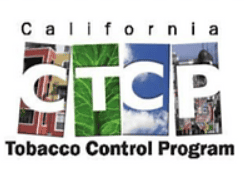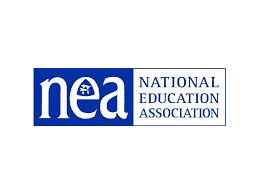Our Work
OUR CLIENTS








Unveiling Digital Brilliance: A Deep Dive into Schooly Doo's Diverse Portfolio of Triumphs
Immerse yourself in the realm of digital brilliance as we unveil Schooly Doo’s expansive portfolio, a testament to our unwavering commitment to excellence. Our showcase is a journey through the dynamic landscape of digital marketing, where innovation, creativity, and strategic prowess converge to deliver exceptional results.
Explore the captivating campaigns that have left a lasting impact on diverse audiences. From eye-catching visuals to compelling storytelling, each project in our portfolio reflects the meticulous craftsmanship that defines Schooly Doo’s approach. Witness firsthand how our strategies go beyond conventional norms, creating digital experiences that resonate and elevate brands to new heights.
Dive into the success stories of startups that have blossomed under our guidance and established brands that have undergone transformative digital makeovers. Our portfolio is a tapestry of achievements, showcasing the versatility of our team in tailoring solutions to meet the unique needs of every client.
Discover the magic that happens behind the scenes as our dedicated team collaborates, ideates, and executes with precision. At Schooly Doo, we understand that success is not just about delivering campaigns; it’s about forging partnerships and creating a synergy that propels brands towards sustained growth.
Whether you’re seeking increased visibility, audience engagement, or a comprehensive digital strategy, our portfolio speaks volumes about the impact Schooly Doo can make. Join us on this visual journey through innovation and witness how our data-driven insights, cutting-edge technologies, and creative flair converge to shape digital success stories.
Step into a world where every click, share, and conversion is meticulously planned and executed. Schooly Doo’s portfolio is a living testament to the transformative power of digital marketing. Explore, be inspired, and envision your brand’s digital triumph with Schooly Doo – where excellence is not just a goal; it’s a standard
how to make marketing plan for school
Schools are not just institutions that impart knowledge to students, but they are also businesses that need to market themselves to attract potential students and parents. A marketing plan is an essential tool for schools to drive engagement and enrollment.
Importance of marketing plan in schools
Identify your target audience
Schools have a specific demographic they are trying to target, and it is crucial to identify who those people are. The target audience should be defined based on the age group, geographic location, income level, and other relevant criteria.
Research the market and competitors
It is essential to understand the school’s competitive landscape and identify what makes them stand out. Through market research, schools can identify the forces that shape the preferences of their target audience and stay ahead of their competitors.
Develop a budget and allocate resources
Budgeting for marketing activities is an essential step in developing a marketing plan. It helps to determine the resources available and allocate them efficiently to meet the desired objectives.
Create a timeline for implementation
A timeline for implementing marketing activities will ensure that the school stays on track and meets the set objectives. It is important to plan and prioritize activities to focus on those that will yield the highest returns.
Benefits of having a marketing plan for schools
A well-developed marketing plan can benefit schools in several ways, such as increased enrolment, improved brand recognition, better communication with the target audience, and overall enhanced reputation. The plan serves as a roadmap that guides the school’s marketing activities, directs resources, and offers a clear understanding of how to measure success.
In conclusion, schools that do not have a marketing plan will find it tough to stay competitive in today’s dynamic educational landscape. By developing a well-structured marketing plan, schools can attract the right students, build brand recognition, and create a sustainable competitive advantage.
Identify School Goals
Defining school goals and objectives
Before creating a marketing plan, schools need to identify their goals and objectives. These could include increasing student enrollment, improving academic performance, enhancing the school’s reputation, or expanding facilities. Clear goals help to focus marketing efforts and ensure that resources are allocated effectively.
Aligning marketing plan with school goals
Identify the overall goals and objectives of the school
To align the marketing plan with the school’s goals, it’s necessary to understand the overall mission, vision, and objectives of the school. These could include offering quality education, promoting diversity, or fostering leadership skills. By identifying these goals, the school can develop a marketing plan that supports its mission and vision.
Conduct market research to understand the current perception of the school
To develop an effective marketing plan, schools need to understand their competitive landscape and the current perceptions of students, parents, and the community. Market research can help identify areas of strength and weakness, key attributes that attract prospective students, and opportunities to differentiate from competitors.
Develop a comprehensive marketing strategy
Based on the school’s goals and market research, a comprehensive marketing strategy can be developed. It should include a clear value proposition, messaging, target audience, and channels for communication. Schools can leverage a mix of traditional and digital marketing tactics such as advertising, social media, email marketing, and events to reach their audience.
Implement marketing tactics such as advertising, social media, and events
After developing the marketing strategy, it’s time to put it into action. Implementing advertising, social media, and events can help schools reach their target audience and achieve their marketing objectives. It’s important to track and measure the success of each tactic to optimize the marketing plan and ensure that it aligns with the school’s goals.
In conclusion, creating a marketing plan that aligns with the school’s goals is essential for success in today’s competitive educational landscape. By identifying school goals, conducting market research, developing a comprehensive strategy, and implementing effective tactics, schools can attract the right audience and improve their reputation.
Identify target audience
Defining target audience for school
Before creating a marketing plan, schools must identify their target audience. The audience could be prospective students, parents, alumni, or the community. Identifying the target audience is crucial in developing a marketing plan that resonates with them and achieves the school’s goals.
Understanding the needs of the target audience
Understanding the needs and preferences of the target audience is essential in developing an effective marketing plan. Researching their demographics, behaviors, and psychographics could help schools tailor their messaging and communication channels. For example, if the target audience prefers digital communication, schools could leverage social media or email marketing to reach them.
After identifying the target audience and understanding their needs, schools can develop a marketing plan that aligns with their goals and resonates with the audience. The marketing plan could include a clear messaging strategy, value proposition, and effective communication channels. Implementing advertising, social media, and events could help schools reach their target audience and achieve their marketing objectives.
It’s important to track and measure the success of each tactic to optimize the marketing plan and ensure it aligns with the school’s goals. By identifying the target audience and understanding their needs, schools can improve their reputation, increase enrollment, or achieve other objectives.
In summary, identifying the target audience is crucial in developing a marketing plan that achieves the school’s goals. By researching their preferences and developing a messaging strategy that resonates with them, schools can attract the right audience and improve their reputation.
Analyze Competition
Identifying competitors of school
Before creating a marketing strategy, schools must identify their competition. Competitors could include other local schools, online schools, and educational institutions offering similar programs or services. By identifying their competition, schools can better understand their market and develop a strategy that differentiates them from the competition.
Analyzing strengths and weaknesses of competitors
Once the competition has been identified, it is important to analyze their strengths and weaknesses. This analysis helps schools identify areas where they could improve and differentiate themselves from the competition. For example, if a competitor has a strong online presence, schools could consider investing in their website and social media channels to compete effectively.
Using tables for comparisons could help schools better understand their competition’s strengths and weaknesses. By comparing the strengths and weaknesses of each competitor side by side, the schools can determine areas where they have an advantage or disadvantage.
In addition to identifying strengths and weaknesses, it’s also important to monitor competitors’ marketing strategies. This could include analyzing their messaging, advertising campaigns, and online presence. By understanding their competitors’ marketing strategies, schools can identify opportunities for improvement and differentiate themselves from the competition.
In conclusion, analyzing the competition is a critical component of developing a successful marketing strategy for schools. By identifying competitors, analyzing their strengths and weaknesses, and monitoring their marketing strategies, schools can differentiate themselves and attract their target audience effectively.
Develop Marketing Strategies
Choosing appropriate marketing channels
After analyzing their competitors, schools can start developing an effective marketing strategy that differentiates them from the competition. One critical aspect of this process is choosing appropriate marketing channels for reaching the target audience.
Schools should determine which marketing channels are most effective for reaching their target audience. For instance, if the target audience is parents with young children, social media channels and neighborhood fliers may be more effective than radio ads or billboards.
Another factor to consider when choosing appropriate marketing channels is the budget. Schools should opt for affordable channels that offer the highest return on investment. For example, a school with a limited budget could consider focusing on leveraging social media platforms, email marketing, word-of-mouth referrals, and local community events, instead of more expensive TV or print advertisements.
Crafting an effective messaging strategy
In addition to choosing the appropriate marketing channels, schools must craft an effective messaging strategy that resonates with their target audience. The messaging strategy should highlight the school’s unique value proposition and differentiate it from competitors.
Schools should consider using bullet points or tables to showcase their differentiators. These may include the quality of education, experienced teachers, modern facilities, extracurricular activities, or safety records. Moreover, the messaging should be consistent across all channels and should provide clear information about enrollment, admission requirements, and other important details.
Measuring success and making adjustments
Finally, schools must track the success of their marketing strategies and make necessary adjustments to improve their effectiveness. Schools can use Google Analytics or other similar tools to track website traffic, social media engagement, and other metrics.
In conclusion, developing a comprehensive marketing strategy is essential for schools to differentiate themselves from their competitors effectively. By choosing appropriate marketing channels, crafting an effective messaging strategy, and tracking success, schools can attract their target audience and achieve long-term success.
Set Budget and Timeline
Allocating budget for marketing plan
Schools should allocate a budget for marketing activities depending on their goals and target audience. They should consider the costs associated with different marketing channels like social media, print advertisements, online advertising, and direct mail. Allocating the budget should not be based on guesswork or gut feeling, but instead on previous marketing campaigns that had an impact on the target audience.
It is important for schools to strike a balance between the budget and expected Return on Investment (ROI). Rather than planning on allocating their entire budget at the beginning, schools should consider starting with a pilot program and further increasing investment if it proves to be effective in the long run. This approach will help schools manage their budgets effectively and reduce their losses in case of an unsuccessful campaign.
Setting ta timeline for marketing activities
In addition to budget allocation, schools should also create a timeline for their marketing activities. This timeline should outline key milestones and deadlines that must be met to execute effective marketing campaigns. Creating a timeline will enable schools to allocate their resources efficiently and prioritize important tasks.
Schools should consider a range of factors when developing their timeline, including the time required to develop marketing materials like banner ads, flyers, social media posts, and landing pages. They should also consider the launch timing and duration of the marketing campaigns, ensuring that everything is in sync with the school calendar.
In conclusion, apart from developing effective marketing strategies, allocating budget and timeline is essential in helping schools reach their target audience. Careful consideration of these factors will help schools enter the market with a winning formula, an effective messaging strategy, and by choosing the right marketing channels.
Evaluate and Adjust
Measuring the effectiveness of a marketing plan
To ensure that a school’s marketing plan is successful, it is essential to measure its effectiveness and adjust accordingly. This involves monitoring the progress of marketing campaigns and analyzing data regularly By doing so, schools can identify any areas that are underperforming and make the necessary adjustments to improve results.
One way to measure the effectiveness of a marketing plan is by analyzing the Return on Investment (ROI). ROI is the ratio of the net profit generated by a marketing campaign to the cost of the campaign. If the ROI is positive, it means the campaign is profitable, and if it is negative, it means the campaign is incurring losses. Schools can use ROI as a benchmark to determine whether their marketing campaigns are successful or not.
Another way to measure the effectiveness of a marketing plan is by tracking the metrics. Different marketing channels have different metrics, such as click-through rates for online advertisements, open rates for email campaigns, and engagement rates for social media posts. Schools should monitor these metrics regularly and analyze the data to see whether they are meeting their goals.
Once schools have identified any areas that need improvement, they should make the necessary adjustments to improve their marketing campaigns. This could involve changing the messaging, targeting a different audience, or using a different marketing channel altogether. By being flexible and willing to adjust their approach, schools can optimize their marketing campaigns and achieve better results.
In conclusion, evaluating and adjusting a marketing plan is essential in ensuring that schools reach their target audience effectively. By measuring the effectiveness of their marketing campaigns regularly and making adjustments where necessary, schools can improve their ROI and achieve their goals.


